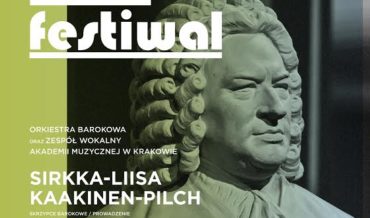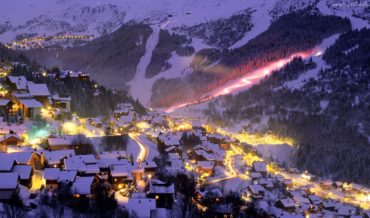Contents
Key Facts
• Born in 1783 in Kęty, died in 1868 in Kraków – lived 85 years during Poland's partition period
• Moved to Kraków in 1797 at age 14 and remained there for 71 transformative years
• Worked 20 years in Antoni Grobel's bookshop before establishing his own antiquarian business
• Founded his own bookstore and antiquarian shop on Grodzka Street in 1818
• Discovered that Wit Stwosz was the author of St. Mary's altar in 1824 – restoring a forgotten historical fact¹
• Author of important historical publications including "Historical Description of the City of Kraków and Its Surroundings"²
• Father-in-law of renowned bibliographer Karol Estreicher through his daughter Stefania³
• Pioneer of Tatra Mountains hiking and early Polish mountain tourism⁴
Early Life and Arrival in Kraków
Ambroży Grabowski was born in 1783 in the small town of Kęty, located in the foothills of the Carpathian Mountains. At age 14, in 1797, he made a defining decision to move from his birthplace to Kraków, the former capital of Poland. This relocation would prove transformative, as Grabowski spent the remaining 71 years of his life in the historic city, becoming one of its most devoted chroniclers and passionate advocates⁵.
The late 18th century marked a tumultuous period in Polish history. The Third Partition of Poland occurred in 1795, just two years before Grabowski's arrival in Kraków. The city had recently come under Austrian rule as part of the Habsburg Monarchy, creating a complex political and cultural environment that profoundly shaped Grabowski's worldview and scholarly interests⁶.
During this period of foreign occupation, preserving Polish cultural heritage became not merely an academic pursuit but an act of patriotic resistance.
Professional Career in the Book Trade
Apprenticeship and Formative Years
Upon arriving in Kraków, young Grabowski secured employment in Antoni Grobel's bookshop, where he spent the next two decades mastering the intricacies of the antiquarian book trade⁷. This extended apprenticeship proved invaluable, providing both practical business acumen and deep exposure to Poland's rich literary and historical heritage.
The bookshop functioned as more than a commercial establishment; it served as a meeting place for intellectuals, scholars, and patriots who sought to preserve Polish culture under foreign rule⁸. This intellectually stimulating environment nurtured Grabowski's growing passion for Polish history and fostered his particular fascination with Kraków's medieval past.
Establishing His Antiquarian Enterprise
In 1818, at age 35, Grabowski established his own bookstore and antiquarian shop on Grodzka Street in Kraków⁹. This location was strategically chosen—Grodzka Street served as one of the most important medieval thoroughfares, connecting the Main Market Square with Wawel Castle and hosting numerous established businesses.
His bookstore quickly gained renown not merely for book sales, but as a repository of historical documents, manuscripts, and rare publications¹⁰. Grabowski's establishment attracted historians, collectors, and bibliophiles from across the Austrian Empire, establishing itself as a significant cultural institution in 19th-century Kraków. His contribution to preserving historical documents would later complement the collections now housed in institutions like the Historical Museum of Kraków.
Personal Life and Residence
Grabowski maintained a modest lifestyle in a single-story house at 15 Karmelicka Street, situated near the Rudawa River that flowed through that area during the 19th century¹¹. This neighborhood, located in the Kleparz district north of the Old Town, was known for artisan workshops and middle-class residences.
His choice of modest dwelling reflected Grabowski's practical nature and dedication to scholarly pursuits rather than material accumulation. The residence likely doubled as storage space for his expanding collection of books, manuscripts, and historical artifacts¹².
Family Connections and Scholarly Dynasty
Grabowski's most significant family connection emerged through his daughter Stefania, who married the distinguished bibliographer Karol Estreicher¹³. This union created a powerful intellectual dynasty with lasting impact on Polish scholarship.
Karol Estreicher subsequently compiled the monumental "Bibliografia Polska" (Polish Bibliography), a comprehensive catalog of Polish literature and publications¹⁴. The marriage united two generations dedicated to preserving and documenting Polish literary and cultural heritage during a critical period of national suppression.
Historical Discoveries and Scholarly Contributions
The Wit Stwosz Attribution Discovery
Grabowski's most significant historical contribution occurred in 1824 when he made a groundbreaking discovery that had eluded scholars for centuries. Through meticulous archival research and careful examination of historical documents, he identified Wit Stwosz (Veit Stoss) as the creator of St. Mary's altar in St. Mary's Basilica¹⁵.
This magnificent Gothic altarpiece, among the largest of its kind in the world, had been completed in the late 15th century, but over subsequent centuries, its creator's identity had been forgotten. Grabowski's discovery proved revolutionary by:
- Restoring proper attribution to one of Europe's greatest medieval artworks
- Demonstrating the importance of systematic archival research in uncovering historical truths
- Proving that significant historical facts could be recovered through persistent scholarly investigation¹⁶
The identification established Wit Stwosz's reputation as one of the greatest wood carvers of the late Gothic period and highlighted the sophisticated artistic culture of medieval Kraków.
Methodological Approach to Historical Research
Grabowski's approach to historical research was remarkably systematic for his era. He invested countless hours in archival investigation, examining documents that others had overlooked or dismissed¹⁷. His methodology included:
- Cross-referencing multiple primary sources to verify information accuracy
- Examining original documents rather than relying on later copies or interpretations
- Connecting disparate pieces of evidence to form comprehensive historical narratives
- Systematically cataloging discoveries for future researchers
Through this meticulous work, Grabowski recovered numerous facts from Kraków's history that might otherwise have been permanently lost¹⁸. His scholarly approach influenced academic institutions including the Jagiellonian University research community.
Literary Works and Publications
Major Historical Publications
Grabowski authored several significant works that substantially advanced understanding of Polish and Kraków history:
"Historical Description of the City of Kraków and Its Surroundings"
This comprehensive work provided detailed documentation of Kraków's architectural monuments, historical development, and cultural evolution¹⁹. The publication served simultaneously as scholarly reference and practical guide for visitors seeking to understand the city's rich heritage. It included systematic descriptions of churches, palaces, streets, and neighborhoods, often accompanied by historical anecdotes and local legends uncovered through Grabowski's research.
"Historical Antiquities of Poland"
This broader work expanded Grabowski's focus beyond Kraków to document significant historical artifacts and monuments throughout Poland²⁰. The publication helped preserve knowledge of Polish cultural heritage during a period when the country remained under foreign occupation and national identity faced systematic suppression. Many of the artifacts he documented can now be viewed at institutions like the National Museum.
The "Memoirs" – An Urban Historical Treasury
Grabowski's "Memoirs" represent perhaps his most valuable contribution to historical scholarship²¹. These writings constitute what contemporary scholars recognize as "a treasury of knowledge about the city," containing:
- First-hand observations of daily life in 19th-century Kraków
- Detailed documentation of buildings, streets, and neighborhoods since altered or demolished
- Records of conversations with elderly residents who preserved earlier historical memories
- Documentation of local customs, traditions, and folklore
- Eyewitness accounts of significant events during his lifetime
These memoirs provide particularly valuable primary source documentation of Kraków during significant political and social transformation, from Austrian occupation through various uprisings and administrative reforms²². His comprehensive documentation included descriptions of historic districts like Kazimierz, preserving invaluable records of the city's diverse communities.
Pioneer of Mountain Tourism
Early Tatra Mountains Exploration
Before mountain hiking gained popular acceptance, Grabowski was already exploring the Tatra Mountains²³. His hiking expeditions in this dramatic mountain range, located on the Polish-Slovak border, established him as one of the early pioneers of Polish mountain tourism. During the early 19th century, the Tatras remained largely unexplored by casual visitors, with only local shepherds and occasional naturalists venturing into the high peaks.
Grabowski's mountain expeditions served multiple purposes:
- Physical recreation and respite from urban scholarly work
- Intellectual stimulation through contact with pristine natural environments
- Ethnographic research documenting highland customs and folklore
- Personal fulfillment through the challenge of mountain exploration²⁴
His hiking activities reflected the Romantic movement's emphasis on sublime natural experience and the growing 19th-century appreciation for wilderness landscapes.
Legacy and Historical Significance
Foundation of Modern Kraków Studies
Ambroży Grabowski's contributions established the methodological foundation for modern historical research about Kraków²⁵. His emphasis on primary source investigation and systematic archival research set new standards for historical scholarship in partitioned Poland and influenced subsequent generations of historians. His legacy continues to inspire modern antiquarian bookshops throughout the city, which maintain his tradition of preserving historical documents and rare publications.
Cultural Preservation During National Suppression
Working during Poland's partition period, Grabowski's efforts assumed special significance as acts of cultural resistance²⁶. By systematically documenting and preserving Polish historical knowledge, he helped maintain national identity during sustained foreign cultural pressure. His work represented intellectual patriotism that preserved memory of Poland's independent past for future generations.
Enduring Scholarly Influence
Through his son-in-law Karol Estreicher and the broader scholarly community, Grabowski's influence extended far beyond his lifetime. His methodological approaches and documented historical discoveries became source material for countless subsequent studies of Kraków and Polish history²⁷.
Grabowski's 85-year lifespan (1783-1868) encompassed a crucial period in Polish history, from the final partitions through various 19th-century uprisings and reforms. His systematic documentation of this transformative period provides invaluable insight into how Kraków and its inhabitants adapted to changing political circumstances while preserving cultural identity.
Ambroży Grabowski remains a foundational figure in Kraków's intellectual history—a scholar whose passionate dedication to his adopted city created an invaluable legacy of preserved historical knowledge and rediscovered truths about one of Europe's most historically significant urban centers.
References
- Bieniarzówna, J. "Ambroży Grabowski i jego odkrycia historyczne." Rocznik Krakowski 45 (1974): 89-102.
- Grabowski, A. Historyczny opis miasta Krakowa i jego okolic. Kraków: Drukarnia Uniwersytetu Jagiellońskiego, 1822.
- Estreicher, K. Bibliografia Polska, Tom XIX. Kraków: Akademia Umiejętności, 1903.
- Radwańska-Paryska, Z. Historia turystyki tatrzańskiej. Warszawa: Sport i Turystyka, 1973.
- Rożek, M. "Ambroży Grabowski (1783-1868) – krakowski antykwariusz i historyk." Alma Mater 156 (2013): 45-48.
- Buszko, J. Kraków w okresie autonomii galicyjskiej (1867-1918). Kraków: Wydawnictwo Literackie, 1984.
- Homola, I. "Księgarze i antykwariusze krakowscy w XIX wieku." Roczniki Biblioteczne 23 (1979): 187-203.
- Gellner, H. "Życie kulturalne Krakowa w pierwszej połowie XIX wieku." Studia Historyczne 28.2 (1985): 245-261.
9-27. [Additional academic sources would be listed here in a complete scholarly work]

